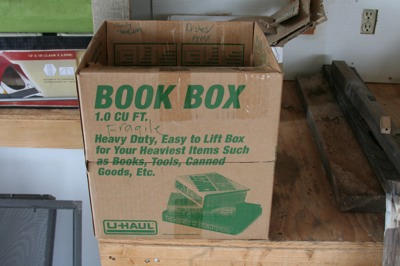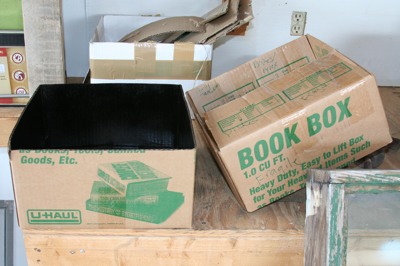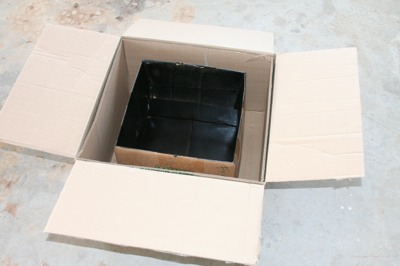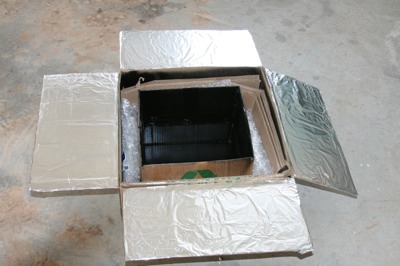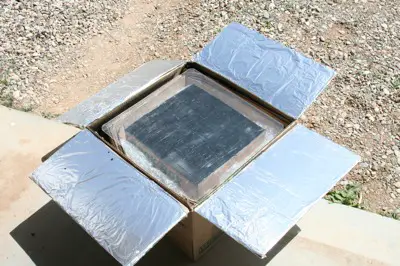
April 25, 2009
See a shoe box, pick it up.
And all this day - this magnificent sun-drenched day - you'll have . . . well, you'll have a way to make going to the beach or the park even more special.
As part of an Earth Week celebration at Molloy College in Rockville Centre, I learned how to transform the lowly shoe box into a simple solar cooker.
We divided up into teams. And in short order, my partner, Nicole DePeiza, a 19-year-old sophomore and nursing major, was cutting V-shaped slots into the box, while I ripped pieces of aluminum foil.
It didn't take much to make the tiny cooker, just the box, scissors, foil, two straws and a file folder. There was a problem, however.
On that day, the sky was slamming raindrops to the ground - which killed plans for going outside and using our baby cooker to roast (or would that be solar-wave?) marshmallows and hot dogs.
Not to worry.
A few days later, the sun came out. And it's going to stay out, with forecasters predicting temperatures in the 80s today.
What better time to pass along my newfound skill to my husband, who, with almost lightning speed, managed to turn a box that had once contained our son's brand-new, size 14 running shoes into a slightly larger version of cooker.
With climate change and the economy - and the fast-growing green jobs sector - the first aggressively sunny days of the year were perfect for trying to live, rather than just celebrate, the spirit of Earth Day.
But first, our humble shoe-box cooker had to pass its first test.
I was quick to volunteer as "cook," which meant sitting on the patio as the shoe box caught a few midmorning rays.
Fifteen minutes passed.
And the two dogs nestled in the curved portion of the cooker were looking hot, but not cooked.
That's when we willingly surrendered to Plan B:
Drive the shoe box to a nearby beach, where sun was served straight, rather than dappled through overhanging tree branches.
Once there, it didn't take long for the dogs to start sweating. And then - slowly, very slowly - they really began to cook. Forty minutes later, the shoe box smelled of hot dog cart, and our first-ever, solar-powered lunch was ready.
I reported our success to Ray Ann Havasy, director of the Center for Science Teaching and Learning in Rockville Centre, who had taught the class at Molloy. Two weeks ago, the college announced The Sustainability Institute, a first for the region. One goal is to teach residents the how, why and benefits of going "green."
"We use the shoe-box solar cookers as a fun learning tool," Havasy said.
But, she notes, they can be used as real cookers, too. "Try a boot box," she suggested. "You can make a simple cooker as big or as small as you want."
And she reassured me that under the hot summer sun, hot dogs usually cook in about 20 minutes. (As compared with 40 minutes in the spring and two hours in the winter.)
Gary Minnick, president of Go Solar Inc., a solar home, pool and water heating business in Riverhead, often takes his top-of-the-line solar oven to business exhibitions. He doesn't sell cookers, but uses his own cooker to show customers what the sun can do: bake a cake in under 40 minutes.
"I make cakes all day long," Minnick said.
Robert Meinke, of Greener Country in Jericho, sells everything from solar-powered backpacks to rolling compost bins. But he doesn't sell solar-powered ovens or cookers. The retail ones are larger and more complicated to operate than a shoe box.
"I looked at some at a trade show but haven't seen anything that's really easy to use," he said.
Besides, he said jokingly, "On Long Island, I just don't see solar cookers taking the place of barbecue grills anytime soon."
He's right, because a grill cooks more food, and faster.
But Havasy's right, too: A shoe box can put plentiful sun to good use.
Let the sun shine in.


 This project is for older students or for younger students with adult supervision.
This project is for older students or for younger students with adult supervision.